Video: Shrub Haul & Planting with Garden Answer
Garden Answer ‘s got a bunch of gorgeous new shrubs to plant and a big bag of Bio-tone Starter Plus to help them establish fast. Follow along and find out how it’s done.
Featured Products:
Garden Answer ‘s got a bunch of gorgeous new shrubs to plant and a big bag of Bio-tone Starter Plus to help them establish fast. Follow along and find out how it’s done.
Featured Products:
Watch as Laura from Garden Answer creates a beautiful planter for Fall using Flower-tone and Potting Soil Mix!
Featured Products:
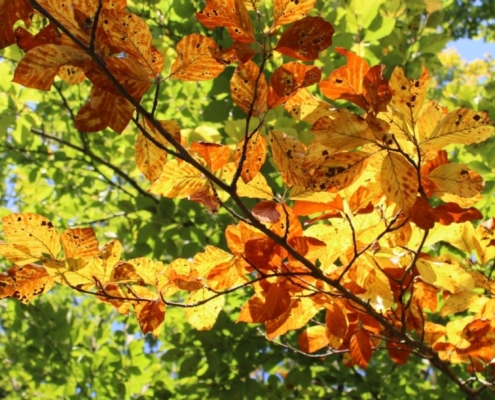
Summer has come and gone— but that doesn’t mean you should give up and let your garden go for the year! The colder season signals that it’s time to prepare your green space for winter and find alternative ways to keep your favorite plants in your life. Keep reading to ensure you’ll be ready when the temperatures drop.
Don’t dig up your perennials just yet! While it’s true that they’re prone to being taken by frost, if you take enough precautions, you should be able to conserve them and plant seeds for a beautiful spring bloom. Be sure to tackle weeds to preserve the soil and add mulch to protect them from the harsh winter wind. Six months later, you’ll be glad you took these extra steps! For fall-planted bulbs such as tulips, daffodils, and hyacinths, be sure to fertilize with Espoma Organic Bulb-tone.
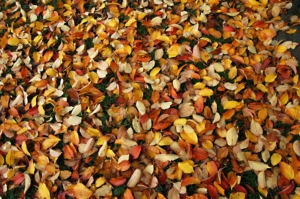
Care for your lawn
Raking those autumn leaves can sometimes feel like a never-ending chore. But it doesn’t have to be that way. In fact, you should start to look at them as a benefit. You can actually mow the dead leaves and create a makeshift fertilizer for your soil. This will lessen the burden of cleaning up every time there’s a strong wind that knocks a pile of leaves loose and benefit your soil. To show your lawn a little extra love, check out these premium organic lawn fertilizers.

Fluff up your garden with trees and shrubs
Colder weather doesn’t have to mean barren backyards. Fall is actually a great time to plant trees and shrubs! While the weather is cooling off, the soil is still warm enough for the roots to develop in them, which is where Bio-tone Starter Plus might come in handy. After planting, they will go dormant as the soil cools. Just be sure to water them beforehand so they’re ready to jump back to life in the spring.

Bloom your flowers indoors
Contrary to popular belief, the vibrant flower garden of your dreams can still be a reality even during the harshest winter months. A technique that forces bulbs to bloom indoors can help you bring it indoors! So while it may be a pure white winterland outdoors, your windowsill can still brighten up your day.
Take care of your equipment
Before you pack everything up for the season, be sure to give your tools a good cleaning. Wash off any excess dirt to avoid returning to rusty tools in the spring. You can also coat your metal tools in vegetable oil to avoid cracking from the harsh, cold weather. Lastly, sharpening your pruners and loppers so that when you’re ready to use them again, you’ll be pleased to find tools that feel like they’re brand new!
Do you feel ready to face the coolers months yet? All it takes is some diligence and Espoma knowledge to be prepared for the winter and ready for a strong comeback in the spring. So grab those gardening tools and start today.
For more about creating leaf mulch, watch this video from Laura at Garden Answer!
Featured Products
It’s time for another installment of our Q&A series with the wonderful folks who make Espoma such a great place to work! Up next is David Mountford, our Senior Logistic Manager. We’re so proud to say he’s been with us for 32 years and still going strong! Read on to find out the details of his backyard oasis and the gardening product he can’t live without.
Q: What’s your favorite part of your job?
A: The collaboration between ownership, management, salesforce, and plant. Everyone across the board communicates very well and has created an awesome culture.
Q: How are you approaching things differently now either at home and with work as a result of COVID-19?
A: I find myself working longer and harder as my computer is always on and easier to access. There are times after dinner that I will just walk by my laptop and check my email. I try to stay in the same routine as if I was waking up to travel to work.
Q: What about your personal life? Any new hobbies and/or habits helping to pass the time?
A: I live in South Jersey with my wife and two daughters, and we spend a lot of time gardening as a family.
Q: Tell us about your personal garden, yard or plants.
A: We have an inground swimming pool and spend a lot of family time there. Our yard is small, but we have utilized a lot of evergreens to create privacy and integrated a lot of perennials to add color. It’s kind of like our vacation oasis.
Q: What is your top gardening tip?
A: Tend to your plants. Make it a habit to walk the property to monitor any issues before they overtake the plant.
Q: What’s one Espoma product you couldn’t live without?
A: I recommend Bio-tone Starter Plus when installing. Using Bio-tone is like an insurance policy for your plants, ensuring that they grow healthy for years. I also feed all my containers with Espoma Bloom throughout the summer.
Q: What made you want to work at Espoma?
A: My father was a salesman for Espoma for 15 years. I was working retail in the garden industry and it was tough. I only had one day off and worked 60+ hours a week. As I started a family, I felt there would be a lot I would miss with my kids. Then the logistics person retired and I knew the company well enough to know there would be stability.
We’re so lucky to have David on our team, and we hope to keep him around for many more years to come. One thing’s for sure — Espoma wouldn’t be the company that it is today without the hard work of people like him! Stick around to learn more about some of our other wonderful team members soon.
Featured Products:
Have you thought ahead to your fall harvest yet? August is prime time to plant delicious and nutritious vegetables that will come to life in the cooler months. And there’s nothing better than being able to spice up your home-cooked dishes using your very own garden — no need to run to the supermarket! Read on to find out which veggies you should be planting right now.
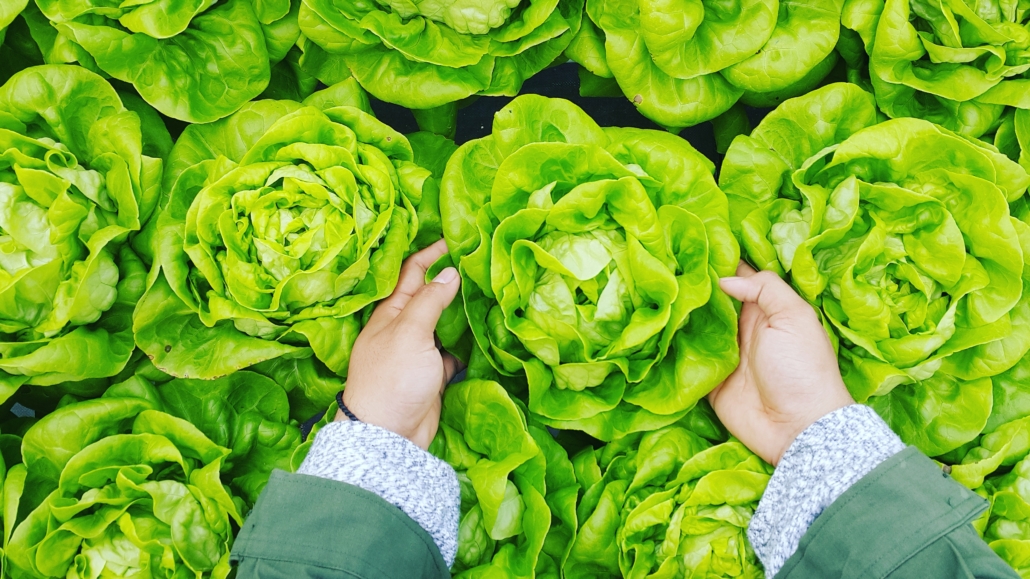
Lettuce
Did you know lettuce cannot be frozen, dried, pickled, or canned? That’s why you have to eat it fresh! Luckily, planting it right now means you’ll be able to enjoy it in just a few months. A fall harvest is ideal as lettuce’s sturdiness prevents any frost from destroying it. These leafy greens are a good source of vitamin C, calcium, iron, and copper — making it the perfect base for a healthy salad. Keep an eye out for the dark green leaves when harvesting as they’re even healthier than the light green ones.
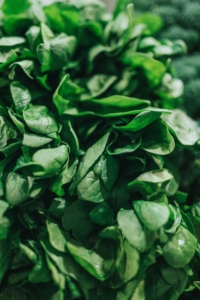 Spinach
Spinach
Spinach is well known for its low-calorie count and high levels of vitamin A, C, and iron — making it the perfect addition to that healthy salad. This veggie also gives you the highest turnover out of all the others. If collected in small quantities, you can keep harvesting them late until May! The best time to start planting them is now, at the tail end of summer.
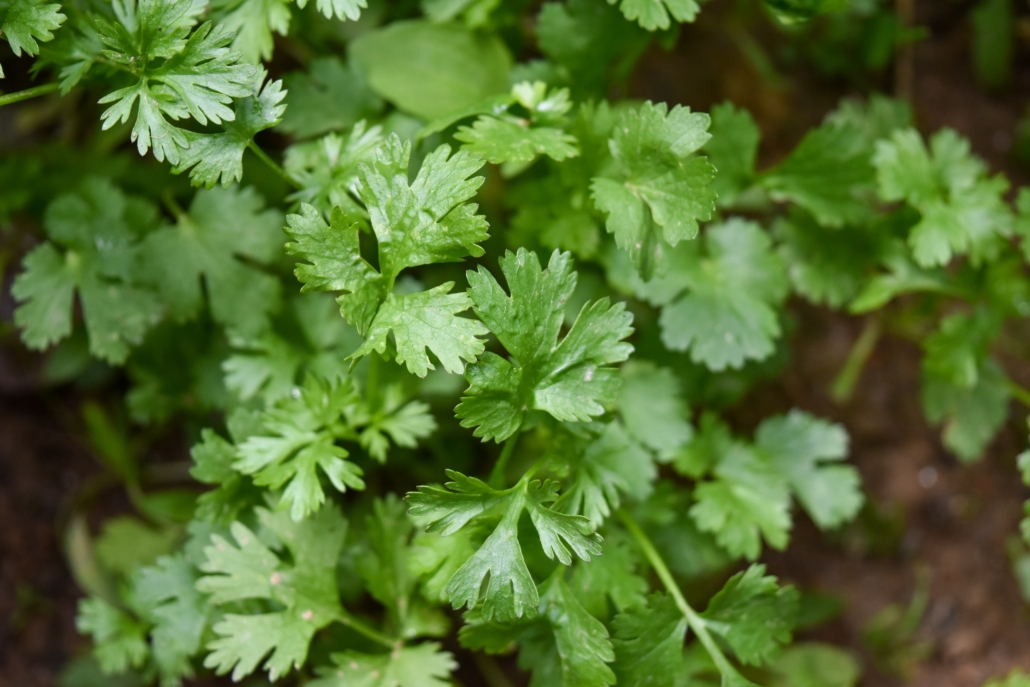
Parsley
Ready for another healthy addition to that salad we’re working on? Parsley is a rich source of Vitamin K, C, and A, and minerals like magnesium, potassium, iron, and calcium. It’s no wonder this veggie has been used in dishes since ancient Rome! It’s also believed to have anti-tumor, anti-bacterial, and antifungal properties. Plant your parsley now to make sure you can reap all these benefits in the fall.
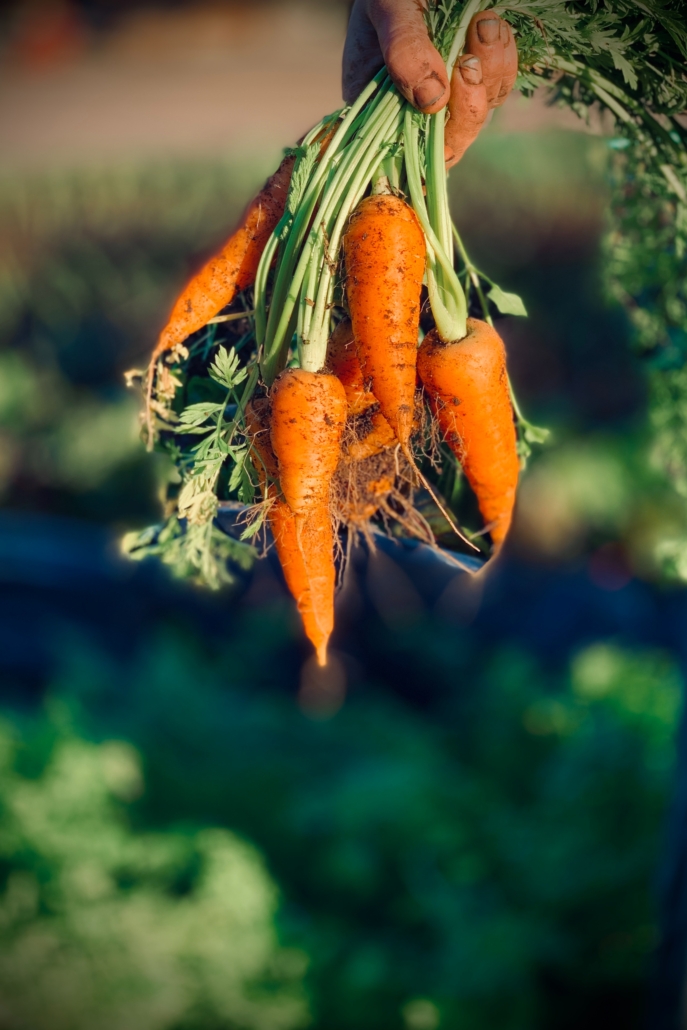
Carrots
If you’re planning on sowing some veggies that aren’t leafy greens, carrots should definitely be your first choice! As this vegetable grows into the fall season, the cool weather turns the starch to sugar, making them extra delicious. This sweet flavor makes them the perfect side or snack — sauteed, roasted, or even raw! Keep in mind that this plant does need a little extra care compared to some of the others on this list, so be sure to use vegetable food like Garden-tone to provide them with the energy they need to grow.
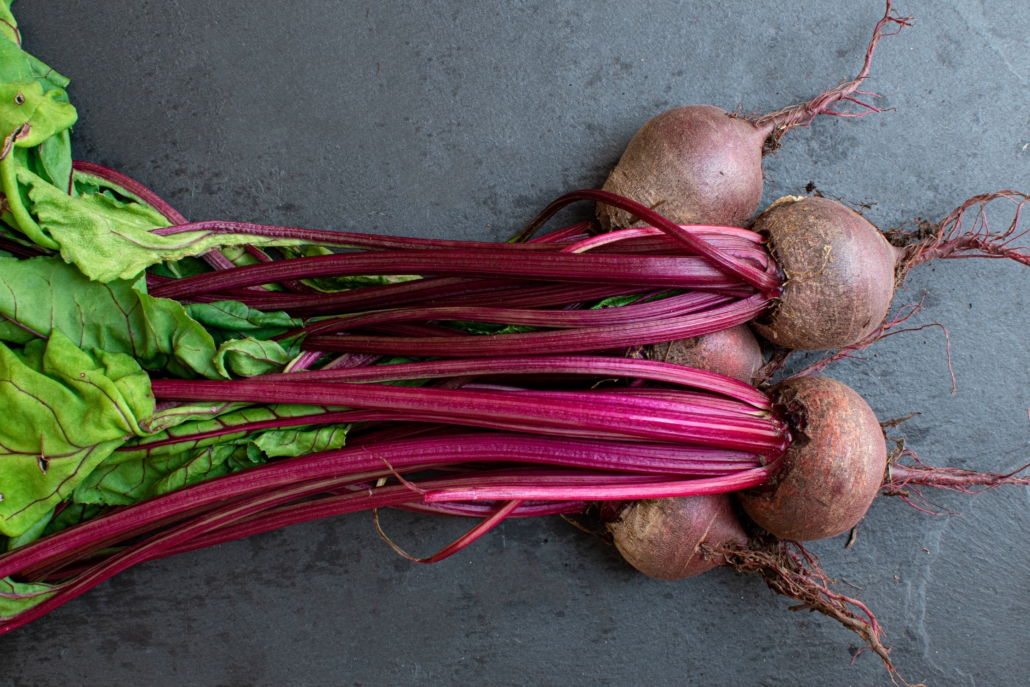
Beets
Last but not least, beets should definitely be on your August to-plant list. Did you know beets are edible from the tip of their green leaves to the bottom of their brown roots? They also help capture some hard-to-catch toxins and flush them out. These same antioxidants provide anti-inflammatory agents that provide a wide array of health benefits. Still not convinced? Since beet juice helps cleanse your liver, it’s thought that it can even help cure hangovers! If you want to make use of the entire plant and enjoy all these delicious benefits, make sure to sow the seeds now — about 8 weeks before the first frost.
*****
Just because summer is winding down, doesn’t mean it’s time to pack up your gardening supplies. August is the perfect time to plant some of your favorite vegetables! Cooking primarily with these veggies straight from your garden will give you some of the freshest and tastiest dishes. So get your family together, head outside, and get planting!
Featured Products:
Fall crops already? That’s right! Join Garden Answer and get some great ideas for food crops in the upcoming season.
Featured Products
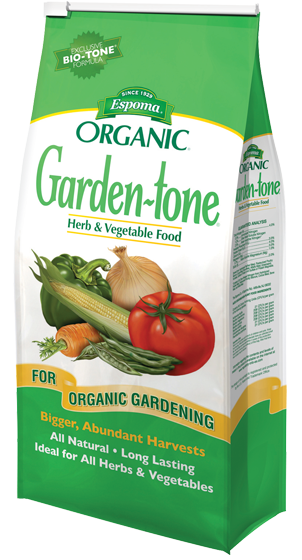
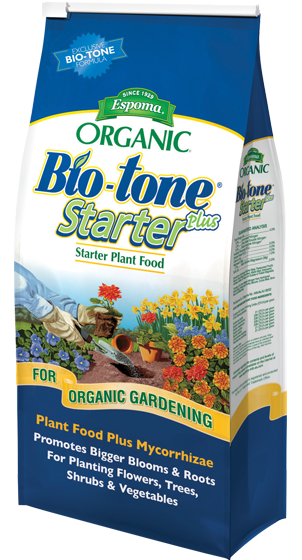
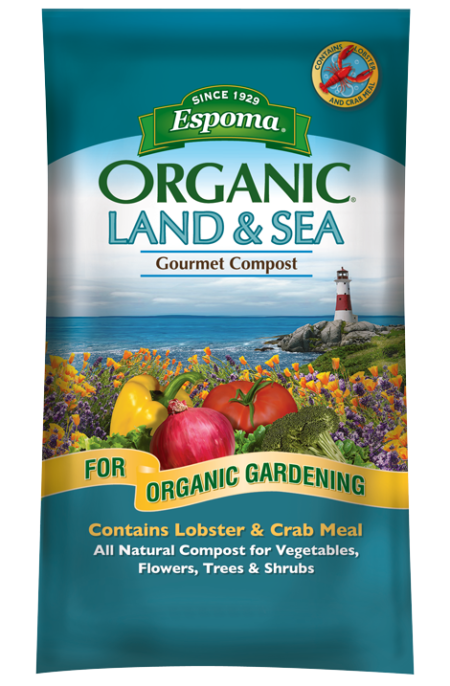
Here at Espoma, our products are only as great as the team behind them. That’s why we’re excited to begin our Q&A series where you’ll get to learn a bit more about the talented folks behind the brand. We want you to see for yourself just how our company is comprised of hard-working people who genuinely care about our customers and everything plant- and garden-related!
First up is our Southeast Territory Sales Manager, Bonnie Satterthwaite. Bonnie has been with us for 14 years! We’d love to tell you about all her and the amazing things she has done for Espoma over the years, but we figured it would be best to hear it straight from the source. So, we sat down with Bonnie and let her put it in her own words.
Q: What’s your favorite part of your job?
A: Developing relationships and often becoming friends with our customers. And, of course, the opportunity to visit all of the fabulous garden centers in my area.
Q: What about your personal life? Any new hobbies helping to pass the time?
A: I purchased a rowing machine, but have yet to leave the dock…
Q: Tell us about your personal garden, yard, or plants.
A: I truly love gardening, and I know that passion resonates with my dealers. I maintain a floral cutting garden, a white/night garden, over 150 hydrangeas, and a hydrangea graveyard.
Q: What is your top gardening tip?
A: Never think you are finally finished and get rid of non-performers!
Q: What’s one Espoma product you couldn’t live without?
A: Without hesitation, BioTone Starter Plus. I do not plant without it. I have seen what it does for plants and transplants. I have seen unsolicited “with and without” trials by garden centers who use the “trust and verify” model. It is an amazing product. I am proud to recommend all of the Espoma line, because of our dedication to quality, the environment, and the safety of children and pets.
Q: What is your favorite aspect of gardening?
A: My favorite aspect is certainly the seasonal outdoor garden beds — just tending the garden beds and the joy of watching things flourish. There comes, for me, great satisfaction from the hard work — and I find the whole process relaxing. I love a morning and late evening stroll around the garden.
Q: What made you want to enter the gardening industry?
A: I was a stay-at-home mom and my sister was a grower for a local garden center. She asked me to come and help her plant 10,000 geraniums during school hours. The owner of both the growing operation and garden center told me I talked too much to be in the greenhouse and asked if I would come to his garden shop during the busy season and talk to customers. And there you go….
Q: Tell us what made you want to work at Espoma and what makes it a special place to work?
A: I met Jeremy Brunner on a garden center bus tour and, unbeknownst to me, my Espoma adventure was about to start. I was very happy at my previous job, but Jeremy’s passion and vision for the growth of the Espoma company was something that was missing from my previous job. I wanted to be a part of something that I could see and feel was going to be spectacular. Espoma cares just as deeply for their work family as they do for their products. So, for me, there was just no question on where I wanted to continue my career.
We were so fortunate to have Bonnie join us when she did — and we hope to keep her around for as long as possible! At Espoma, we definitely pride ourselves on being able to congregate hard-working employees who genuinely enjoy the gardening industry the same way our loyal customers do. Thanks for all you do, Bonnie!
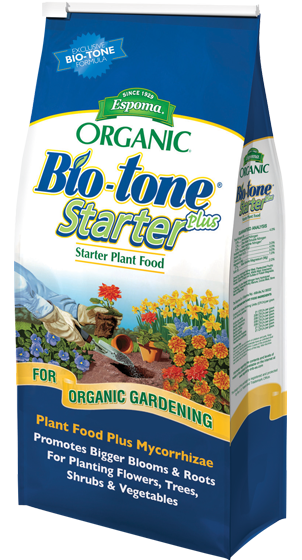
With Memorial Day in the rearview, summer is officially here once again — and while we wish that meant nothing but sunshine and barbecues, bugs seem to always make an appearance this time of year. But did you know there are ways to avoid getting bitten and bugged every time you want to relax outside?
The fragrance of certain plants can actually block the receptors insects use to find us. It’s just another great reason to get a garden going in your backyard, around your patio, or anywhere you like to enjoy fresh air. All you really need to sustain these helpful plants is some good starter fertilizer like Espoma’s organic Bio-tone Starter Plus and to make sure they’re fed every two to four weeks with Grow! to ensure they get the proper nutrients.
So, if you’re getting some unwanted guests during those summer cookouts, try planting some of these simple staples.
Lemon Grass
Did you know many mosquito repelling candles and sprays are made from citronella oil? Lemon grass naturally produces this ingredient and doubles as a beautiful grassy plant for walkways and around tables. Alternatively, you can plant it in its own pot and use it wherever your local mosquitos tend to congregate.
Other Lemon-Scented Plants
Similar to lemongrass, other plants that give off a strong citrus fragrance — like lemon-scent geraniums, lemon thyme, and lemon balm — work well to repel bugs. These plants use their fresh scent to keep their leaves from being eaten — and in turn can help you keep from being bitten.
Lavender
Despite lavender’s sweet smell being quite popular among people, most insects hate it. Keeping this plant near seating areas will help ward away mosquitos and other pesky flies. A great thing about this plant is that you can use it fresh or dried to get the job done — or even just use the extracted oil. This way you have different options on how you want to decorate while still keeping the pests at bay.
Rosemary
Rosemary is a great addition to your cookout. Throw a few sprigs on the grill as you’re cooking to release its fragrance into the air. It’ll smell wonderful to you and your family but make the bugs fly in the other direction.
Basil
Basil is another herb that will keep the mosquitos away. It’s also toxic to mosquito larvae, so placing this plant near water can help discourage mosquitoes from laying eggs.
Mint
Mint’s fragrance is great at repelling pests like ants, mosquitoes, and even mice. It’s also always a nice addition to any dish, so incorporating it into your barbecue can be beneficial in more ways than one.
Garlic
If cabbage moths are just as pesky as mosquitoes in your backyard, garlic can be your saving grace. When crushed, the garlic bulbs release allicin — an enzyme that produces that classic garlic smell. Your local pests will definitely not enjoy your garlic breath, so go ahead and use it up all weekend long.
Any and all of these plants can be used purely to keep the bugs away, but they’re also beautiful decor for your outdoor area. Be sure to keep up with them all season long in order to reap the benefits whenever your cookouts come around.
Here are some of our other blogs we thought you might enjoy.
BUG OFF – Plants That Repel Mosquitoes
Perk Up Summer Containers with Stunning Annuals
Growing Scrumptious Tomatoes in Easy Containers
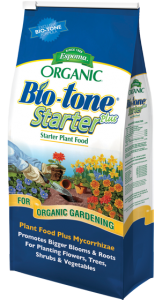
In this video from Garden Answer, Laura plants a new garden for her sister–in-law. She has already outlined the new beds and removed the sod. The next steps are installing a drip irrigation system by tapping into an old one and marking the spots for the trees she will be planting.
Drip irrigation emits water at the base of the plants, which is better for plants than overhead watering. Hard water can leave damaging build up on foliage and wet leaves can invite diseases. With drip irrigation, all of the water soaks into the ground and doesn’t evaporate. It’s the most efficient method of watering.
Irrigation systems take the work out of watering, but it’s not – set it and forget it. Water needs vary at different times of the year. Laura is using emitters that deliver one gallon of water per hour, a standard-setting. She still waters each newly planted tree with the garden hose to make sure the soil has settled and that there are no air pockets.
Planting in mid-summer isn’t ideal because of the heat, but it can be done with a tiny bit of extra care and water. Laura always recommends using Espoma’s Bio-tone Starter Plus whenever she plants. And, as she points out, it’s even more important when the plants are stressed, in this case by heat. The mycorrhizae in Bio-tone helps stimulate root growth to ensure new plants get maximum water and nutrients from the soil to minimize transplant shock and loss.
These trees will become the “bones” of her design. She has taken into account the mature height of the trees so they do not interfere with the power lines above them or the fire hydrant between them. She has also chosen narrow varieties of evergreens that will not outgrow their allotted space in the garden.
Slim Trees for Small Spaces
Weeping White Spruce
An elegant, straight trunked tree with weeping branches. The needles are green with a bluish tint. A perfect choice for narrow spaces. Hardy in zones 2-7.
Merlot Redbud
Bright lavender-pink flowers bloom in spring before the leaves unfurl. Dark purple, glossy foliage stands up to summer heat. Perfect for smaller landscapes. Hardy in zones 6-9.
‘Baby Blue’ Blue Spruce
Attractive silvery-blue needles make this spruce standout, plus it maintains its color throughout the year. The habit is smaller and narrower than other blue spruce. Hardy in zones 2-8.
‘Hillside’ Upright Norway Spruce
A narrow, upright form growing to just 10 feet tall in the first 10 years. Perfect for smaller urban gardens. Dark green needles are backed by attractive, burnt orange stems. Hardy in zones 3-7.
Columnar Dwarf Mugo Pine
A narrow, upright form of mugo pine, makes a strong architectural statement. Will grow to just 8 feet tall. Produces small, yet ornamental cones. Hardy to zones 2-8.
Here are a few of our other blogs and videos that we think you’ll enjoy:
Top Trees for Fantastic Fall Color
English cottage gardens date back centuries. They were used to grow vegetables, herbs for healing, fruit trees, perhaps a beehive, and common flowers. The informal style went through a renaissance in the late 1800’s when they became somewhat more nostalgic than practical.
The informal aesthetic of dense planting and natural materials is still en vogue today. In this video, Laura outlines 10 design principles to help you design a cottage garden. Before you start, make sure you have plenty of Espoma’s organic Bio-tone Starter Plus plant food to make sure your plants get the best possible start.
No Straight Lines
Cottage gardens are always informal and a touch whimsical. Avoid straight lines. Gently curving edging looks more natural and playful. If your site restricts you to a straight edge, let the plants spill over it to create an unrestrained look.
Large Groups of the Same Plant
White cottage gardens are more relaxed in their design, it is still best to use large sweeps of the same plant. Think of planting in groups of three, five or seven. That is far more restful to the eye than a jumble of onsies and twosies.
Spacing Doesn’t Matter
This is one time you do not have to follow the advice on the plant tag. Cottage gardens are always densely planted and generally grow more densely packed with time. Annuals and biennials are often used in cottage gardens and will self-sow in the border. Biennials are plants that take two years to grow and flower from seed like the foxgloves shown. Another advantage to planting things close together is that there is less room for weeds to grow.
Color Harmony
It’s very important to pick a collection of plants that have harmonious colors. Without that the border would look chaotic. Garden Answer uses a collection of soft pinks and peaches with touches of blue and lavender. It needn’t always be soft colors, but they do need to be unified in some way.
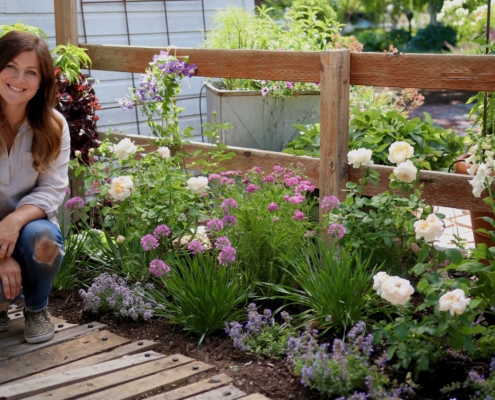
Use Varied Heights and Textures
In any planting, it’s a good idea to think about texture, height and foliage color as major design elements. Nothing blooms all the time. Varied foliage forms and colors will create interest even when the flowers aren’t in bloom. Laura uses Heuchera specifically for the silvery foliage color.
Anchor Plants/Structural Elements
This is sometimes referred to as the “bones” of a garden. It’s a structural element that all of the other plants get woven around. In this case, it’s a beautiful shrub rose named Rose ‘The Lady Gardener’, a fragrant beauty with full, apricot blossoms. The rose is repeated three times. Repetition is soothing to the eye. It’s possible to use evergreens for a slightly more formal feel, or whatever peaks your interest.
Fragrance
The first thing everyone does when they pick a flower is to hold it up to their nose. Cottage gardens are known for their fragrance. Try to select varieties that smell good at the garden center. Roses, lavender, sweet peas, and sweet alyssum are all good choices.
Not Perfectly Maintained
Along with relaxed design principles, comes relaxed maintenance. Planting tightly will discourage weeds. Annuals like poppies will self-seed and move around the border, just like the biennial foxgloves. Weeding everything that comes up might mean that you weed out these plants and inhibit their spontaneous movements.
The Look Will Change Over Time
This style of gardening is the exact opposite of a formal border filled with geometric shaped boxwood. By its very nature this is meant to be more random. People often sow cosmos, violas and other plants that have a tendency to move around. Let them surprise you. If you really don’t like where one popped up, it’s easy enough to remove.
Be Patient
Being patient is really what gardening is all about. A garden is never really finished. Enjoy the journey!
Garden Answers Plant List
Nepeta ‘Cat’s Pajamas’ – catmint
Achillea – pink yarrow
Allium ‘Serendipity’ – ornamental onion
Rose ‘The Lady Gardener’
Heuchera Dolce ‘Spearmint’ – Coral Bells
Clematis ‘Brother Stephan’
Digitalis Foxy Hybrids – foxglove
Lobularia ‘Blushing Princess’ – sweet alyssum
Here are more videos from Garden Answer we hope you will enjoy.
How to Plant Cottage-Style Flower Beds!
Plant Your Window Boxes Like Garden Answer
Succulent Pot in a Pot – Quick Version
How to Re-pot Houseplants – Quick Cut
*****
Featured Products:

